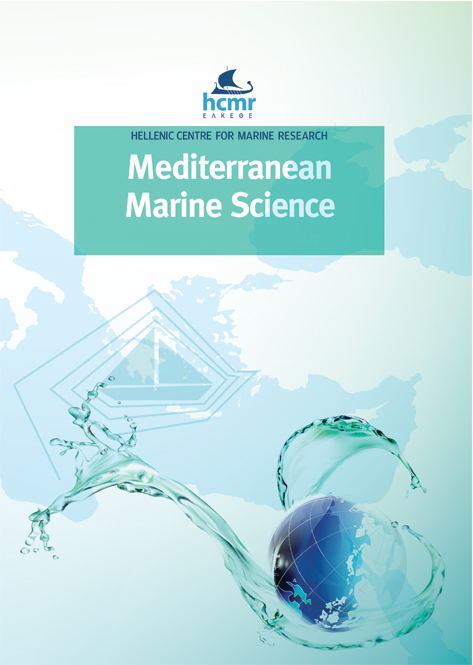A three dimensional, full life cycle, anchovy and sardine model for the North Aegean Sea (Eastern Mediterranean): Validation, sensitivity and climatic scenario simulations
Abstract
We present the development of a 3D full-lifecycle, individual-based model (IBM) for anchovy and sardine, online coupled to an existing hydrodynamic/biogeochemical low-trophic level (LTL) model for the North Aegean Sea. It was built upon an existing 1D model for the same species and area, with the addition of a horizontal movement scheme. In the model, both species evolve from the embryonic stage (egg+yolk sac larva) to the larval, juvenile, and adult stages. Somatic growth is simulated with the use of a “Wisconsin” type bioenergetics model and fish populations with an adaptation of the ‘super individuals’ (SI) approach. For the reference simulation and model calibration, in terms of fish growth and population biomass, the 2000-2010 period was selected. Interannual biomass variability of anchovy was successfully represented by the model, while the simulated biomass of sardine exhibited low variability and did not satisfactorily reproduce the observed interannual variability from acoustic surveys. The spatial distribution of both species’ biomass was in relatively good agreement with field data. Additional single-species simulations revealed that species compete for food resources. Temperature sensitivity experiments showed that both species reacted negatively to a temperature increase. Anchovy, in particular, was more affected since its spawning and larval growth periods largely overlap with the period of maximum yearly temperature and low prey concentration. Finally, simulation experiments using IPCC climatic scenarios showed that the predicted temperature increase and zooplankton concentration decrease in the future will negatively affect anchovy, resulting in sardine prevalence.
Article Details
- Zitationsvorschlag
-
GKANASOS, A., SCHISMENOU, E., TSIARAS, K., SOMARAKIS, S., GIANNOULAKI, M., SOFIANOS, S., & TRIANTAFYLLOU, G. (2021). A three dimensional, full life cycle, anchovy and sardine model for the North Aegean Sea (Eastern Mediterranean): Validation, sensitivity and climatic scenario simulations. Mediterranean Marine Science, 22(3), 653–668. https://doi.org/10.12681/mms.27407
- Ausgabe
- Bd. 22 Nr. 3 (2021)
- Rubrik
- Research Article
Authors who publish with this journal agree to the following terms:
- Authors retain copyright and grant the journal right of first publication with the work simultaneously licensed under a Creative Commons Attribution Non-Commercial License that allows others to share the work with an acknowledgement of the work's authorship and initial publication in this journal.
- Authors are able to enter into separate, additional contractual arrangements for the non-exclusive distribution of the journal's published version of the work (e.g. post it to an institutional repository or publish it in a book), with an acknowledgement of its initial publication in this journal.
- Authors are permitted and encouraged to post their work online (preferably in institutional repositories or on their website) prior to and during the submission process, as it can lead to productive exchanges, as well as earlier and greater citation of published work (See The Effect of Open Access).








